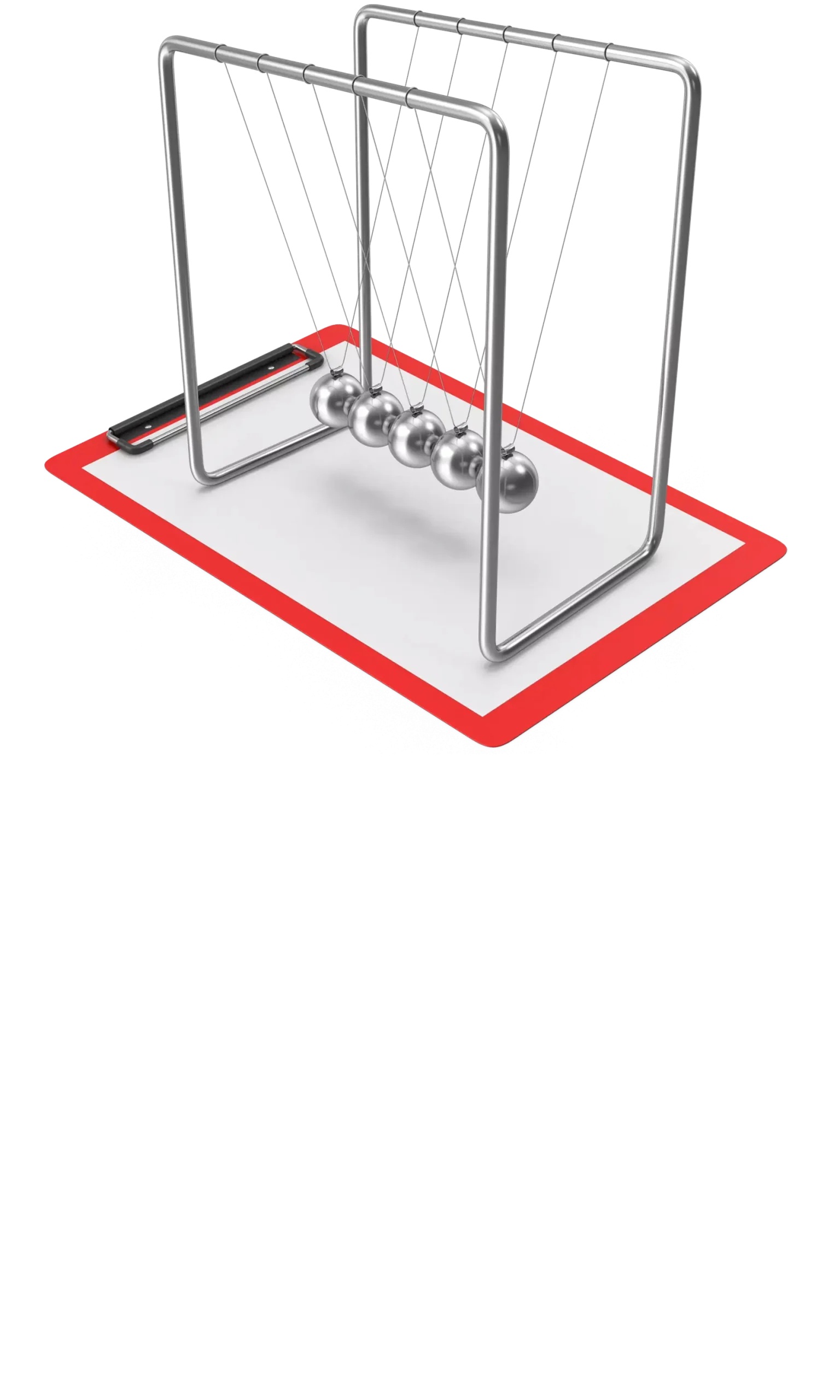Innovation Alphabet
The Innovator’s Dilemma
In a nutshell
Sometimes “doing everything right” is not enough. The Innovator’s Dilemma is a concept expressed by Professor Clayton Christensen that says the successes and capabilities of great companies can determine their failure when faced with constantly changing markets and technologies. Will you risk getting it wrong or will you risk not innovating?


Definition
Clayton M. Christensen states that outstanding companies can do everything right and still lose their market leadership. Or worse, disappear altogether. Indeed, any successful company with established products risks to get pushed aside unless managers know when to abandon traditional business practices.
This is exactly the key point of The Innovator’s Dilemma. Self-destruction implies cannibalization and strategies that almost certainly appear unprofitable on paper. Yet, if you do not disrupt yourself, someone else will do it for you.
Apple’s cannibalism
A great example of The Innovator’s Dilemma can be the iPhone burying the iPod before Android did so. Apple realized cellphones would never be great MP3 players. So, even if they cannibalized some sales early on, trying to maintain an artificial distinction would not be useful in the long run.
Many companies would have tried to charge more for iPod capability’s on the first generation iPhone. We could almost say that in this way Apple managed to keep the iPod concept alive longer, giving the impression that using a phone as an MP3 player was a compromise and not a replacement.

Application Fields
• Research & Development (R&D): This is the area that represents the beating heart of innovation in a company. It is devoted to the study of technological change: it will be the gateway for new resources that could disruptively revolutionize a particular business.
• Marketing: An area that could identify a new slice of potential customers starting with niche markets. They represent guinea pigs and test labs that help technologies grow and become attractive in the eyes of larger companies. Starting instead with competitors’ largest customers does not often prove to be a good strategy.
• Human Resources: Winning a gamble is not just a matter of luck or the merit of a single manager’s audacity. An ambitious company must share among all its components values and processes designed to embrace innovation and understand how to harness it to transform a gamble into the winning play. A good HR department, therefore, knows how to bet on the capabilities of employees.
Do you have a Strategy & Innovation challenge to tackle? Let’s face it. Together.
C-levels from these companies (AND MORE) relied on my expertise to overcome thEIR CHALLENGES IN THIS AREA. And You can, too.
Can I help you?Industries
• The Innovator’s Dilemma in the publishing industry
Amazon was founded in 1994 as an online bookstore, when Barnes & Noble and Borders were still the largest book retailers. Jeff Bezos decided to go all in on the network, understanding early the potential of the Internet for him to expand his sales range. In 2001, Borders handed over the helm to Amazon in managing its website.
• The Innovator’s Dilemma in the entertainment industry
In 2008, former Blockbuster CEO Jim Keyes did not seem particularly bothered by Netflix, which he did not even consider a real competitor. Five years later, after having been the top audiovisual content rental company for many years with more than 9,000 stores and 84,000 employees, Blockbuster went bankrupt. Netflix won because it was able to read and concretely interpret the user’s need to be able to enjoy the entirety of its catalog from the comfort of home. And because they were patient.
• The Innovator’s Dilemma in the education field
Unlike other encyclopedias, Wikipedia, founded in 2001, decided to be completely online, free, and even collaborative, as it allows anyone who provides reliable sources to contribute in writing entries. Today it is among the 10 most visited sites in the world and the most consulted encyclopedia on the web.
Stay in wonderland
Let me show you how deep the rabbit hole goes.
Check out more of the Innovation Alphabet:

3D Printing
3D Printing
“3D printing” is a process carried out by an electronic device which, instead of resorting to the canonical ink, it molds almost any kind of material: from concrete to living tissue, most usually plastic, but also metal. And the operating principle is similar to that of a traditional printer. The creation of three-dimensional models can lead to the redesign of a company’s production capabilities.
Dive In
5G
5G
5G is the new frontier of cellular telephony. It was designed to improve (or completely replace) previous generations of mobile networks. The 5th generation features lower latency, ensuring flawless performance of business applications and many other digital experiences – thus enabling the new cultural generations to furiously play Fortnite away from home.
Dive In
Advanced Analytics
Advanced Analytics
The term “Advanced Analytics” refers to the ability to autonomously or semi-autonomously analyze data and content to identify correlations, develop analyses, predictions, and recommendations. It is not just a matter of collecting information and then organizing it into watertight compartments: the ultimate goal is to identify a dialogue pattern from a data-driven perspective.
Dive In
Agile
Agile
Agile is an approach to software development designed to respond to change. Teams quickly analyze the context in which they operate, identify uncertainties faced, and figure out how to adapt to always move forward. Interaction between individuals comes before processes and tools; collaboration with the customer is more important than negotiating contracts.
Dive In
Ansoff Matrix
Ansoff Matrix
The Ansoff Matrix is a marketing planning model that arises from the intersection of new and existing products and markets. It derives four possible strategies for expanding the company’s market, which are built around four variables with a changeable factor of risks and possibilities: existing product, new product, existing market, new market.
Dive In
Artificial Intelligence
Artificial Intelligence
Artificial Intelligence is not strictly defined. Basically, it is a computer system able to make decisions in an independent and flexible way. A good AI application can perform everyday tasks better than an average person (e.g., identifying other people from their photos on social media or beating the best chess player). Nothing to fear, then. Unless you are a chess champion.
Dive In
Artificial Scarcity
Artificial Scarcity
We often tend to desire what we cannot have. Or what we are in danger of losing: Artificial Scarcity is a strategy that flaunts a limited number of items that do not correspond to actual availability. The goal is to stimulate the perception in consumers that the stock of items is about to run out and thus create a need based on the “fear of being cut off” or the intention to buy the item in order to resell it at a higher price.
Dive In
Attack Surface
Attack Surface
The term attack surface refers to the part of a system that may be subject to attack or breach by hackers. The smaller that surface is, the easier it will be to protect it. Indeed, the Internet is an ocean of deep, dark waters: those who navigate it must be aware that they are exposing themselves to a flood of digital risks. Yet, ironically, we do not need a big boat to shelter us.
Dive In
Augmented Reality
Augmented Reality
Augmented Reality is an ever-evolving technology that overlays multimedia information on top of our common sensory horizon to gain a deeper understanding of our surroundings. No, it doesn’t allow you to step out of the Matrix dream simulation, nor can it be accessed by swallowing a red pill. But neither is it the disturbing experience of the Playtest episode of Black Mirror.
Dive In
Balanced Scorecard
Balanced Scorecard
In business, as in life, you need balance. The Balanced Scorecard is a holistic tool for strategic management. It offers, in fact, the possibility of assessing corporate performance in its wholeness. An overview that embraces four perspectives: the business/financial side, customers and stakeholders, internal processes, and learning and growth.
Dive In